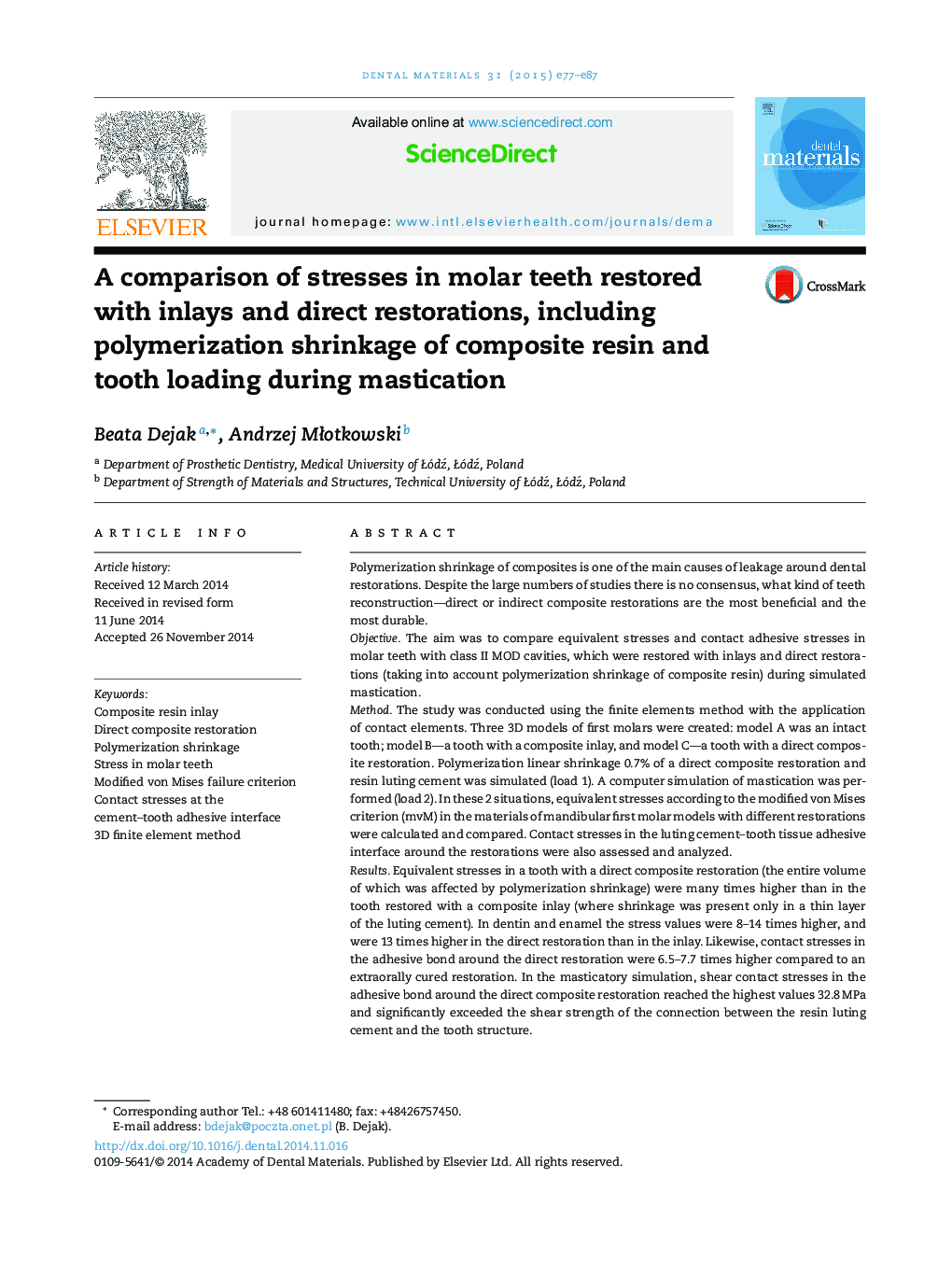| کد مقاله | کد نشریه | سال انتشار | مقاله انگلیسی | نسخه تمام متن |
|---|---|---|---|---|
| 1420809 | 986381 | 2015 | 11 صفحه PDF | دانلود رایگان |
Polymerization shrinkage of composites is one of the main causes of leakage around dental restorations. Despite the large numbers of studies there is no consensus, what kind of teeth reconstruction—direct or indirect composite restorations are the most beneficial and the most durable.ObjectiveThe aim was to compare equivalent stresses and contact adhesive stresses in molar teeth with class II MOD cavities, which were restored with inlays and direct restorations (taking into account polymerization shrinkage of composite resin) during simulated mastication.MethodThe study was conducted using the finite elements method with the application of contact elements. Three 3D models of first molars were created: model A was an intact tooth; model B—a tooth with a composite inlay, and model C—a tooth with a direct composite restoration. Polymerization linear shrinkage 0.7% of a direct composite restoration and resin luting cement was simulated (load 1). A computer simulation of mastication was performed (load 2). In these 2 situations, equivalent stresses according to the modified von Mises criterion (mvM) in the materials of mandibular first molar models with different restorations were calculated and compared. Contact stresses in the luting cement–tooth tissue adhesive interface around the restorations were also assessed and analyzed.ResultsEquivalent stresses in a tooth with a direct composite restoration (the entire volume of which was affected by polymerization shrinkage) were many times higher than in the tooth restored with a composite inlay (where shrinkage was present only in a thin layer of the luting cement). In dentin and enamel the stress values were 8–14 times higher, and were 13 times higher in the direct restoration than in the inlay. Likewise, contact stresses in the adhesive bond around the direct restoration were 6.5–7.7 times higher compared to an extraorally cured restoration. In the masticatory simulation, shear contact stresses in the adhesive bond around the direct composite restoration reached the highest values 32.8 MPa and significantly exceeded the shear strength of the connection between the resin luting cement and the tooth structure.SignificanceEquivalent stresses in the tooth structures restored with inlays and in the restoration material itself and contact stresses at the tooth–luting cement adhesive interface are many times lower compared to teeth with direct composite restorations. Teeth with indirect restorations are potentially less susceptible to damage compared to those with direct restorations. Composite inlays also ensure a better seal compared to direct restorations. Polymerization shrinkage determines stress levels in teeth with direct restorations, while its impact on adhesion in indirectly restored teeth is insignificant.
Journal: Dental Materials - Volume 31, Issue 3, March 2015, Pages e77–e87
